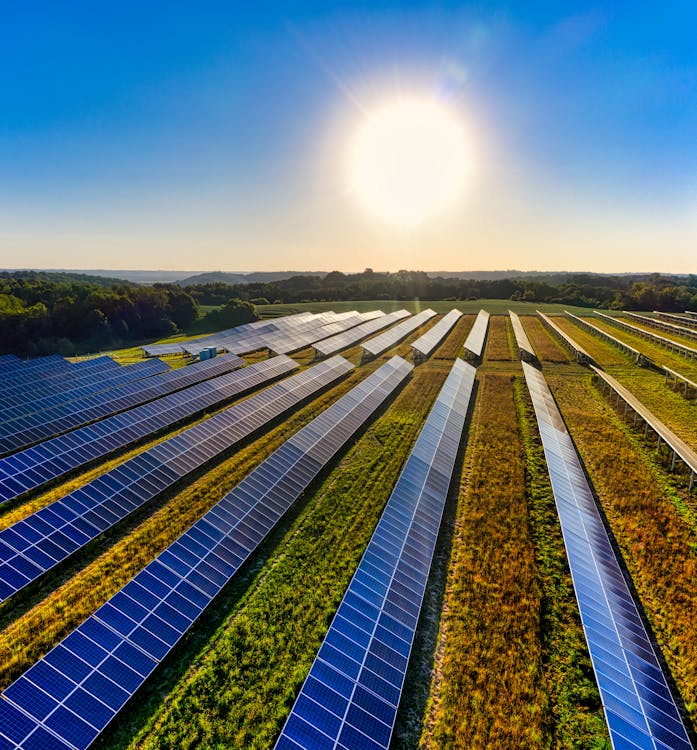Best Time To Install Solar Panels PA: Our Company Specializes In The Installation And Management Of Photovoltaic Energy Systems
History and Development of Solar Panel Business
The creation of solar panel business can be traced back to the 1800s when Alexandre Edmond Becquerel discovered the photovoltaic impact. Would he have imagined how his discovery would reinvent the way we harness energy?
Early Beginnings

In 1954, Bell Labs established the very first useful photovoltaic cell. This marked a substantial turning point in the history of solar energy. They were at first utilized to power space satellites, however who knew this was just the start?
Development and Growth
- In the 1970s, an energy crisis caused increased interest in renewable resource sources, consisting of solar power.
- By the 1990s, developments in technology and increasing ecological awareness resulted in the growth of photovoltaic panel companies worldwide.
A New Period
As we got in the 21st century, the solar market witnessed a rapid growth. The demand for tidy and eco-friendly energy caused a new period in the photovoltaic panel industry.
Remarkable Truths
- The world's very first solar energy station was integrated in 1982 in Hisperia, California.
- By 2019, solar power had become the world's fastest-growing source of power.
The journey of solar panel business has been exceptional, hasn't it? The future holds tremendous potential, with constant improvements paving the method for a sustainable future. Can we envision a world powered totally by solar energy?
Progressing
Today, photovoltaic panel companies continue to innovate, pursuing more effective and cost-effective solutions. The advancement of solar power has come a long method, and yet, the journey has actually just begun.
The Core of Photovoltaic Panel Production
Ever question what goes into producing those shiny, sun-loving photovoltaic panels? The procedure is as remarkable as the end item (Solar Panel Company). High-purity silicon, the primary active ingredient in solar panels, goes through different transformations to guarantee its efficiency and resilience
From Sand to Silicon
Crystalline silicon, the backbone of a lot of solar panels, stems from basic sand. It's an interesting journey, isn't it? The sand undergoes a high-temperature response with carbon to form silicon. However, this isn't simply any silicon. The silicon utilized in solar panels is "solar-grade," with a pureness of 99.9999%. It's this pureness that allows the panels to successfully convert sunlight into power.
Ingot Formation
When the silicon is pure enough, it's time to form ingots. Picture a big, cylindrical block of strong silicon. How is this accomplished? Through a procedure called Czochralski procedure, where the silicon is melted and after that gradually recrystallized. It's a sluggish dance of science, leading to a solid product that is nearly as pure as the raw silicon itself.
Slicing into Wafers
The ingots are then sliced into wafer-thin pieces, like slicing a loaf of bread. Each piece is a prospective solar battery, waiting to harness the power of the sun. Did you understand that the silicon wafers are just about 200 micrometers thick? That's about half the thickness of a human hair! The procedure needs precision and patience, however the result is a set of wafers prepared to be become solar cells.
Producing Solar Cells
With the wafer all set, it's time for the magic to occur. The silicon wafer is 'doped' with other components like phosphorous and boron to develop an internal electric field. It's this field that makes it possible for the conversion of sunlight into electrical power. Complex, isn't it?
Assembly and Quality Control
Solar cells are like puzzle pieces that come together to form a solar panel. The cells are soldered together in a grid-like pattern, then covered with a protective layer of glass. The last action includes strenuous quality control checks. It's vital that every solar panel more info carries out at its peak, would not you concur?
Insider Tip
Constantly keep in mind that even the most efficiently produced solar panel can lose efficiency due to dirt and particles accumulation. Routine cleaning can significantly improve your panels' efficiency.
Comprehending the Environmental Impact of Solar Panel Companies
Ever considered the environmental footprint of a solar panel business? Green innovation, such as solar, has changed our energy landscape, but what about the behind-the-scenes impact?
The Manufacturing Process: A Double-Edged Sword
The production procedure for photovoltaic panels requires a substantial quantity of energy. This procedure, called 'em bodied energy', can be considered as a kind of 'energy debt'. It's a little like obtaining today's sunshine to power tomorrow's energy needs. Fret not, the energy repayment time is often much shorter than you 'd think!
- The energy payback period for photovoltaic panels is generally 1-4 years.
- After this duration, the energy produced is basically carbon-free.

Life After Decommission
And what happens when a solar panel reaches the end of its lifespan? Can it simply be tossed into the trash? No, that would not be extremely green, now, would it?
A viable service is recycling. While photovoltaic panel recycling is still in its infancy, it holds a world of potential. Recycling not just keeps products out of land fills but also reduces the need for new raw materials.
Responsible Sourcing: More Than A Buzzword
Where does the silicon originated from, you ask? The industry's need for silicon and uncommon minerals can lead to damaging mining practices. Accountable sourcing is therefore imperative to minimize hazardous environmental effects.
Lowered Carbon Emissions: The Larger Image
Let's not forget the larger image: solar power considerably lowers carbon emissions. When installed, photovoltaic panels produce clean, eco-friendly energy, balancing out their preliminary manufacturing footprint.
In other copyright, the ecological effect of photovoltaic panel companies is a complex issue. With accountable practices, the guarantee of a cleaner, greener future is well within our grasp.
Financial Performance and Market Share of Photovoltaic Panel Companies
Ever wondered why some solar panel business - Top Rated Solar Installers PA beat others in the market? What sets them apart? The essential lies in their monetary performance and market share
Financial Efficiency: A Critical Indicator
Financial efficiency plays an essential role in the success of any business. For solar panel companies, it's no various. Strong monetary performance allows these companies to purchase innovative innovation, research, and advancement, thus creating premium, efficient solar panels.
But how do they accomplish this? With a focus on expense performance and strategic financial investments. Business that handle to decrease production costs without compromising on quality tend to fare better in the market.
Market Share: A Measure of Success
Market share, on the other hand, is a direct reflection of a company's appeal among customers. A high market share means more property owners are selecting their solar panels over rivals.
So, what's the secret dish for getting a larger market share? It comes down to client fulfillment and brand credibility. Business that focus on client needs and preserve a favorable brand name image are more likely to capture a larger share of the market.
- Client Fulfillment: Photovoltaic panel companies that provide trusted items and extraordinary customer care tend to have greater consumer fulfillment rates.
- Brand name Reputation: A strong brand track record is built with time through consistent shipment of quality product or services.
Financial Performance and Market Share: The Cooperative Relationship
Interestingly, the relationship in between monetary efficiency and market share is not one-sided. They feed off each other. A strong financial performance can increase a company's market share, while a high market share can enhance financial performance.
As a solar panel business, balancing these two elements is essential for long-term success. A company that neglects either of them might discover it hard to preserve its position in the competitive solar market.
The Takeaway
What does all this mean for you? Whether you're a property owner aiming to install solar panels or an investor eyeing the solar market, comprehending the monetary performance and market share of solar panel companies is essential. They are key indications of a company's health and capacity for future growth.